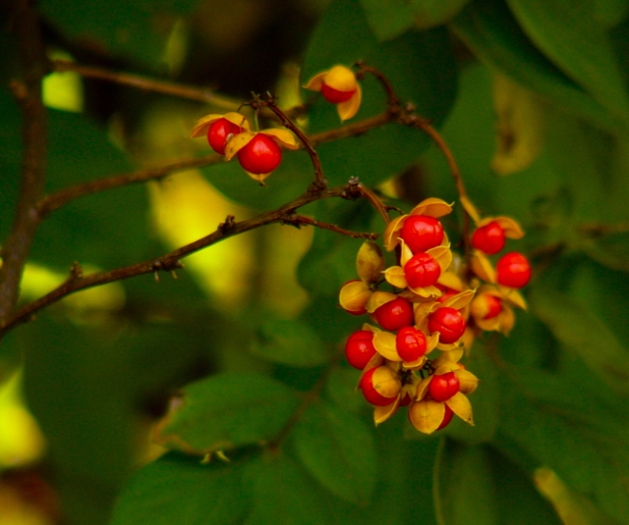American Bittersweet
(Celastrus scandens)
American Bittersweet (Celastrus scandens)
/
/

Jean Pawek
CC BY 3.0
Image By:
Jean Pawek
Recorded By:
Copyright:
CC BY 3.0
Copyright Notice:
Photo by: Jean Pawek | License Type: CC BY 3.0 | License URL: http://creativecommons.org/licenses/by/3.0/ | Attribution: 2010 Jean Pawek | Publisher: Calphotos |






















































































Estimated Native Range
Summary
Celastrus scandens, commonly known as American Bittersweet, is a deciduous climbing vine native to open woodlands, forest edges, and thickets in the Northeastern and North Central United States, as well as parts of Southern Canada. It can grow vigorously, reaching lengths of up to 30 feet (9.1 meters) with woody stems that can be an inch or more thick at the base. The vine’s stems range in color from yellowish-green to brown and are capable of twining around other plants, which may lead to girdling and the death of young saplings. American Bittersweet produces small, inconspicuous, greenish-white flowers in June, which are followed by showy, pea-sized, orange fruits encapsulated in bright red seed coats that persist into winter, providing visual interest and food for birds. The plant is often used in naturalistic plantings and as a cover for fences, arbors, and walls.
American Bittersweet is valued for its ornamental fruit, which can be used in floral arrangements, and for its ability to attract wildlife. It requires full sun to partial shade and is adaptable to a variety of soil conditions, though it prefers rich, well-drained soils. Regular pruning is necessary to control its growth and prevent it from becoming too aggressive. Gardeners should be aware that the fruits are poisonous to humans if ingested and that the plant can be invasive outside its native range, potentially outcompeting native vegetation.CC BY-SA 4.0
American Bittersweet is valued for its ornamental fruit, which can be used in floral arrangements, and for its ability to attract wildlife. It requires full sun to partial shade and is adaptable to a variety of soil conditions, though it prefers rich, well-drained soils. Regular pruning is necessary to control its growth and prevent it from becoming too aggressive. Gardeners should be aware that the fruits are poisonous to humans if ingested and that the plant can be invasive outside its native range, potentially outcompeting native vegetation.CC BY-SA 4.0
Plant Description
- Plant Type: Vine
- Height: 15-30 feet
- Width: 3-6 feet
- Growth Rate: Rapid
- Flower Color: N/A
- Flowering Season: Spring
- Leaf Retention: Deciduous
Growth Requirements
- Sun: Full Sun, Part Shade
- Water: Medium
- Drainage: Medium
Common Uses
Bee Garden, Bird Garden, Butterfly Garden, Deer Resistant, Drought Tolerant, Hummingbird Garden, Low Maintenance
Natural Habitat
Open woodlands, forest edges, and thickets
Other Names
Common Names: Climbing Bittersweet , Staffvine , Waxwork , Amerikansk Träddödare
Scientific Names: Celastrus scandens , Celastrus bullatus , Euonymus scandens , Evonymoides scandens
GBIF Accepted Name: Celastrus scandens L.